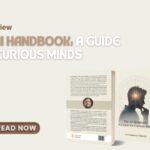
Scientific Insights Embedded Within Ancient Myths
Book : Scientific Insights Embedded Within Ancient Myths
Author: Dr. Sachidananda Padhy
In Scientific Insights Embedded Within Ancient Myths, Dr. Sachidananda Padhy takes readers on a remarkable journey through time, where science and spirituality walk hand in hand. This book offers a unique perspective on Indian mythology and religious texts, showing how ancient stories are not just symbolic or religious, but also carry deep scientific truths hidden in their core.
The strength of this book lies in its deep respect for ancient Indian literature, especially texts like the Manusmruti, Bhagavata Purana, and Mahabharata. The author also draws comparisons with stories from the Bible, creating a bridge between Eastern and Western spiritual traditions. Rather than treating these myths as mere folklore, Dr. Padhy interprets them through a scientific lens, revealing the underlying knowledge of biology, ecology, cosmology, and genetics.
One of the most impressive aspects of the book is how the author connects mythological stories with modern scientific concepts. He explains how ancient sages had a clear understanding of ecological systems, biodiversity, and even principles of evolution. For example, the well-known myth of the cosmic ocean being churned by gods and demons is interpreted as a symbolic representation of the re-establishment of ecological balance after natural disasters. The treasures that emerge from this churning—including divine animals, plants, and even poison—are explained as elements of nature and scientific forces that must be balanced for the world to survive.
The author also explores the idea that religious stories about the creation of life, such as those found in both Indian texts and the Bible, are not just spiritual teachings but also scientific explanations written in poetic form. He discusses how both traditions speak of a time of darkness before the world began, the role of water in the creation of life, and the early appearance of plants, animals, and human beings in a way that surprisingly aligns with modern evolutionary science.
Another powerful theme is the role of ancient wisdom in genetics and human biology. The book highlights how sages from thousands of years ago understood the concepts of heredity and classification. Discussions around the ‘Y’ chromosome, the significance of Gotra (clan lineage), and the ‘XX’ chromosomes in women are presented with examples from mythology. The author suggests that gender, ancestry, and biological identity were deeply respected and studied in ancient India, though expressed in symbolic ways.
Yoga and meditation, too, are not left behind. Dr. Padhy beautifully describes the yogic tradition as a means of achieving mental clarity, peace, and higher consciousness. He portrays yogis as individuals who act as broadcasting centers of calmness and harmony, positively influencing those around them—a concept that resonates with modern ideas of emotional intelligence and mental health.
One of the most surprising insights comes from the author’s reinterpretation of the birth of 100 Kauravas in the Mahabharata. He argues that this may be an early description of advanced biotechnology techniques such as artificial insemination, embryo transfer, or cloning. While such interpretations are bold, they are presented not as definitive facts, but as possibilities to consider with an open and curious mind.
The style of writing is scholarly yet accessible. Dr. Padhy writes with deep conviction and devotion, yet never loses touch with logic or scientific reasoning. The book is well-referenced and thoughtful, making it suitable for both general readers and academic scholars. It is especially valuable for students of history, science, philosophy, and religious studies who are interested in seeing how knowledge systems can complement one another instead of competing.
What makes this book special is its respectful tone. It does not try to disprove science or worship mythology blindly. Instead, it invites readers to view mythology as a coded language—a way our ancestors tried to preserve and pass on complex scientific truths in forms that were easy to remember and share across generations.
In conclusion, Scientific Insights Embedded Within Ancient Myths is not just a book—it is a bridge. A bridge between the past and the present, between belief and inquiry, between India and the world. It encourages us to look at ancient texts with fresh eyes and to honor the depth of knowledge that was once embedded in spiritual traditions. For anyone interested in India’s cultural heritage, science, or philosophy, this book is an inspiring and eye-opening read.
Title: Scientific Insights Embedded Within Ancient Myths
Publisher: Evincepub Publishing
Buy Book From Amazon

